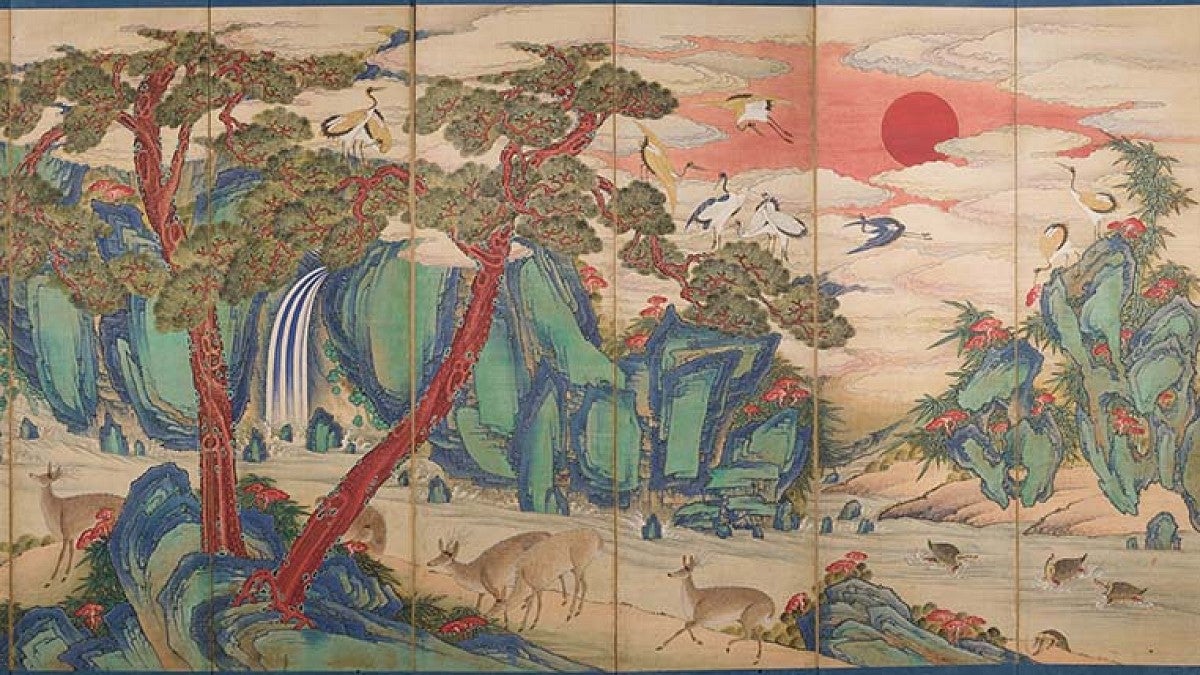Historic and contemporary Korean art highlight the two new exhibitions – “Ten Symbols of Longevity and Late Joseon Korean Culture” and “Elegance and Nobility: Modern and Contemporary Korean Literati Taste” – in the Huh Wing/Jin Joo Gallery of Korean Art at the Jordan Schnitzer Museum of Art.
The installations provide an opportunity to study Korean works including ceramics dating from the fifth through 21st centuries, court and Buddhist paintings and textiles from the Joseon dynasty (1392-1910) through 20th century, and a few contemporary paintings, calligraphy, prints and textiles.
Among the pieces featured is the JSMA’s “Ten Symbols of Longevity” screen, which was commissioned in 1879 to celebrate the recovery from smallpox of Crown Prince Yi Cheok, who grew up to become Emperor Sunjong, the final ruler of the Joseon dynasty. It is generally acknowledged as one of the most important Korean court paintings of its type and was acquired in 1924 by the museum’s founder, Gertrude Bass Warner.
This screen was recently conserved through a generous grant from the Korean National Research Institute of Cultural Heritage (KNRICH). This is the first showing of the Ten Symbols screen since its return from Korea, where it was the centerpiece of a special exhibition at the National Palace Museum in Seoul.
The JSMA was the first American university museum to designate permanent galleries for the display of Korean art and remains one of a handful of academic museums with such galleries. Its Korean art collection is among the most distinguished in the nation.
“Ten Symbols of Longevity and Late Joseon Korean Culture” will be on display in the Jin Joo Gallery through March 15, 2015, while “Elegance and Nobility” will be on view through June 17, 2015.


